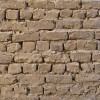Time: Friday, May 13, 2016, 15.00-17.00
Location: University Theater, Nieuwe Doelenstraat 16-18, Room 101A, Amsterdam
This talk – part of a larger project that explores the longue duree, the deep time, of urban mediation – examines the aggregated histories of city-building, mud-molding and mark-making. For millennia mud and its geologic analogues have bound together our media, urban, architectural, and environmental histories. Some of the first writing surfaces, clay and stone, were the same materials used to construct ancient city walls and buildings, whose facades also frequently served as substrates for written texts. The formal properties of those scripts – the shapes they took on their clay or, eventually, parchment and paper foundations – were also in some cases reflected in urban form: how the city molded itself from the materials of the landscape. And those written documents have always been central to our cities’ operation: their trade, accountancy, governance, and culture.
Aggregating these often-separate historical lineages – media history, urban history, archaeology – has the potential to enrich the disparate disciplinary knowledges that are bound together here. Media scholars, for example, can learn to read their histories in archaeological ruins, and urban historians and archaeologists can better appreciate the centrality of communication and media history to their own fields. Thinking these histories in tandem also reveals the long history and expansive geography of urban mediation. Particularly in light of recent attempts to understand what kinds of intelligence are embodied in our digital “smart cities,” the comparatively “dumb” histories of mud and mark-making demonstrate that calculation, coding, and “embedded” technologies have long been integral to our cities’ infrastructures.
Bio
Shannon Mattern is an Associate Professor of Media Studies at The New School. Her writing and teaching focus on archives, libraries, and other media spaces; media infrastructures; spatial epistemologies; and mediated sensation and exhibition. She is author of The New Downtown Library: Designing with Communities and Deep Mapping the Media City (both published by University of Minnesota Press), and she writes a regular column about urban data and mediated infrastructures for Places, a journal focusing on architecture, urbanism, and landscape. You can find her at www.wordsinspace.net
For more information, including the suggested readings, click here.

